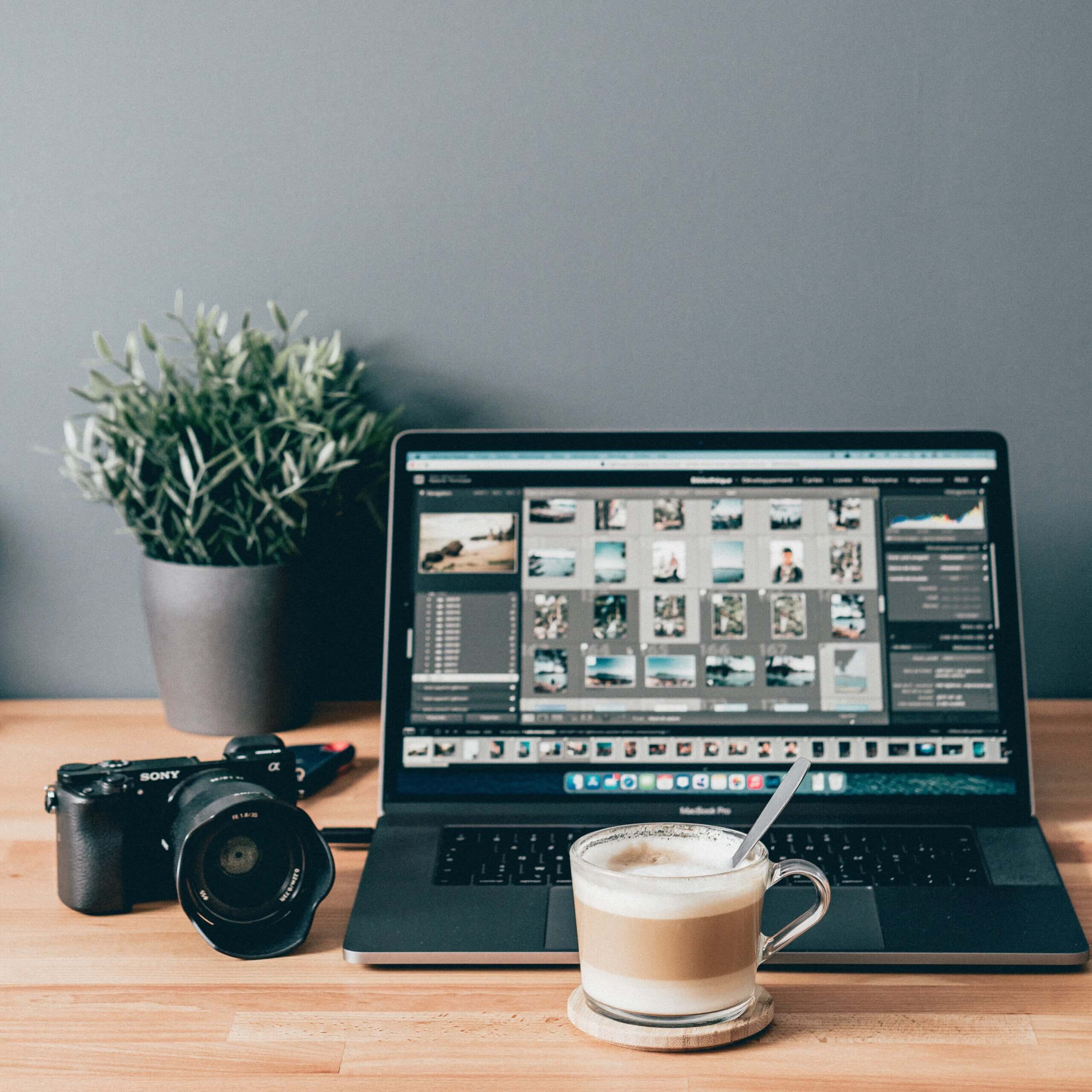
7 small tips for image optimisation for your website
Not everyone is aware of the fact that image optimisation for a website is also part of the well-known search engine optimisation. For this reason, in today’s blog article we would like to introduce you to seven small tips for image optimisation for your website, through which you can get more visibility and visitors for your website. After we already shared an article with some interesting SEO tips (at that time in connection with Google Sheets) almost exactly a year ago, the next ones will follow. To begin with, we’ll briefly explain what search engine optimisation is in the first place. This is followed by the promised seven tips for image optimisation for your website. – Nun wünschen wir Dir viel Spass beim Lesen des Artikels!
 Image optimisation for your website is part of on-page search engine optimisation and offers you the opportunity to increase the visibility of your website and attract more visitors.
Image optimisation for your website is part of on-page search engine optimisation and offers you the opportunity to increase the visibility of your website and attract more visitors.
What does search engine optimisation include?
Search engine optimisation (SEO) describes all measures to increase the visibility of a website. As the name suggests, this involves the visibility of a website and its content in search engines, such as Google in particular. A basic distinction is made between the three types of search engine optimisation and their respective SEO measures:
Technical search engine optimisationmierung
- Loading time
- Hreflang
- XML sitemaps
- Structured data
- Canonisation
- Further SEO measures
Offpage Suchmaschinenoptimierung
- Content Marketing
- Social Media
- Podcasts
- Rezensionen
- Linkbuilding
- weitere SEO-Massnahmen
Onpage Suchmaschinenoptimierung
- Inhalte der Website
- Interne Verlinkungen
- H-Tag-Optimierung
- Title- & Meta-Tags
- Bildoptimierung
- weitere SEO-Massnahmen
1. SEO Tip: Use unique images!
Both users and search engines appreciate unique images that match the content and cannot be found anywhere else. This is because Google usually prefers the original source of an image if it can be found on different pages. In addition, unique images also improve the user experience on your website. Because unique images with a high quality are perceived as more relevant. Therefore, with unique images you also have a higher chance of being linked to from other pages and thus collect more backlinks for your website.
2. SEO tip: Create interesting infographics!
If you are not able to take unique pictures or cannot find suitable motifs, infographics are probably a good idea. They summarise the content of your website or its subpages in an easy-to-understand and visually appealing way. Therefore, they also help you and your website to achieve better rankings in search engines. Because unique infographics not only have less competition, but also increase the time visitors spend on your website. Similar to unique images – or maybe even more so – infographics provide more backlinks on other websites and possibly also on social media, as they are readily shared.
3. SEO tip: Compress the images!
Website operators are always faced with a dilemma when it comes to search engine optimisation for images: on the one hand, they want a high image quality and on the other hand, they want a fast page loading time. Since a high resolution and quality of images extremely reduces the loading time of your website, you should compress your images. Fortunately, there are ways to compress images without loss of quality. Besides Optimizilla and TinyPNG, IloveIMG is also a recommended tool. With these and other tools you can compress your images without loss of quality. This directly improves your page loading time and thus your visibility in search engines.
 As we show you in this article, there are various ways to optimise images: from interesting infographics to image compression, better file names and apt alt tags to schema markups, it’s all there.
As we show you in this article, there are various ways to optimise images: from interesting infographics to image compression, better file names and apt alt tags to schema markups, it’s all there.
4. SEO tip: Adapt the file names!
Even though visitors to your website will probably never see the file names of your images, they are still relevant. This is because the search engines read the file names of your uploaded and embedded images. They then match the file names of the images with the content and the search queries. In order for the search engines to assess your images as suitable and relevant, you should give them the best possible name. Therefore, briefly describe what you see in the picture and, if possible, use one or two relevant keywords in the file name.
5. SEO tip: Find descriptive alt tags!
Just as the file name should describe an image as best as possible, it is also important that the alt tags match the image. These alt tags, which stand for alternative tags, are hardly ever seen by most visitors to your website, but they are again relevant for search engine optimisation. In the alt tags, therefore, describe what can be seen in the image as concisely as possible. Similar to the fourth SEO tip, you should also use one or two relevant keywords in the alt tags so that the search engines understand your image. However, be careful not to put too many keywords in the alt tags so that the search engines, such as Google, do not mark your images as spam.
6. SEO tip: Include LSI keywords!
In addition to the alt tags of your images, there are also the LSI tags or LSI keywords. LSI stands for Latent Semantic Indexing and allows you to place secondary keywords. These are additional terms that have to do with the main topic of your images. This makes it relatively easy to show the relevance of your images for several keywords. This way, the search engines are more likely to show your content to users for related search queries.
7. SEO Tip: Add a Schema Markup!
Schema markups are structured data from code that you place on your website. This data helps search engines to provide users with better results by displaying content as rich snippets in search results. However, you can use these schema markups not only for textual content, but also for visual content. So add a Schema Markup to your image and you have the chance that Google will present it with a corresponding badge at the top of the search results. This will give you a lot of visibility and many new visitors.
 If you implement the tips for image optimisation for your website, we cannot guarantee you success, but you increase the probability of success for more visibility and visitors enormously.
If you implement the tips for image optimisation for your website, we cannot guarantee you success, but you increase the probability of success for more visibility and visitors enormously.

 Image optimisation for your website is part of on-page search engine optimisation and offers you the opportunity to increase the visibility of your website and attract more visitors.
Image optimisation for your website is part of on-page search engine optimisation and offers you the opportunity to increase the visibility of your website and attract more visitors. As we show you in this article, there are various ways to optimise images: from interesting infographics to image compression, better file names and apt alt tags to schema markups, it’s all there.
As we show you in this article, there are various ways to optimise images: from interesting infographics to image compression, better file names and apt alt tags to schema markups, it’s all there. If you implement the tips for image optimisation for your website, we cannot guarantee you success, but you increase the probability of success for more visibility and visitors enormously.
If you implement the tips for image optimisation for your website, we cannot guarantee you success, but you increase the probability of success for more visibility and visitors enormously.